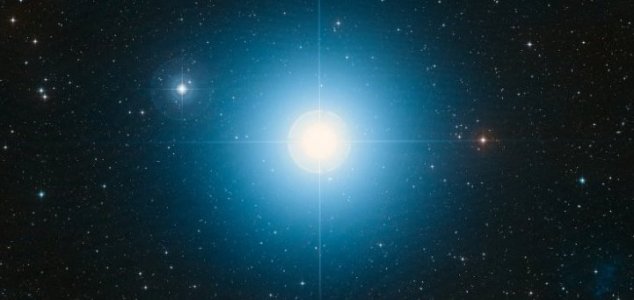Space & Astronomy
April 21, 2020 · 17 comments
17 comments

Image Credit: NASA / ESA / Digitized Sky Survey 2 / Davide De Martin / Hubble
The find was particularly unusual because Kalas had been able to directly observe it - something that happens only very rarely because extrasolar worlds are so much dimmer than the stars they orbit.
It soon became apparent that there was something very strange indeed about Fomalhaut b when the astronomers found that while they could observe it in visible light, they were unable to find the infrared signature typically associated with such a planet.
A few years later things became even weirder still when University of Arizona astronomer Andras Gaspar and colleague George Rieke determined that Fomalhaut b was getting dimmer over time.
By 2014 - ten years after it was originally discovered - the planet had disappeared entirely.
So where did it go ?
Now a new study has finally shed light on the mystery by suggesting that Fomalhaut b wasn't actually a planet at all - it was the lingering light left over from a collision between two large asteroids.
"Our modeling shows the observed characteristics agree with a model of an expanding dust cloud produced in a massive collision," said Gaspar.
According to Kalas, such collisions may only occur once every 100,000 years.
"Was I really the luckiest astronomer in the world when I pointed the Hubble Space Telescope at Fomalhaut back in 2004 ?" he said.
"If I had tried just a few years earlier or a few years later, I never would have discovered it."
Source: CNET.com | Comments (17)
Solving the mystery of the vanishing exoplanet
By T.K. RandallApril 21, 2020 ·
 17 comments
17 comments
Image Credit: NASA / ESA / Digitized Sky Survey 2 / Davide De Martin / Hubble
A relatively nearby extrasolar world discovered back in 2004 has since disappeared without a trace.
Situated 25 light years away, the planet Fomalhaut b was discovered quite unexpectedly by astronomer Paul Kalas and colleagues from the University of California, Berkeley.The find was particularly unusual because Kalas had been able to directly observe it - something that happens only very rarely because extrasolar worlds are so much dimmer than the stars they orbit.
It soon became apparent that there was something very strange indeed about Fomalhaut b when the astronomers found that while they could observe it in visible light, they were unable to find the infrared signature typically associated with such a planet.
A few years later things became even weirder still when University of Arizona astronomer Andras Gaspar and colleague George Rieke determined that Fomalhaut b was getting dimmer over time.
By 2014 - ten years after it was originally discovered - the planet had disappeared entirely.
Now a new study has finally shed light on the mystery by suggesting that Fomalhaut b wasn't actually a planet at all - it was the lingering light left over from a collision between two large asteroids.
"Our modeling shows the observed characteristics agree with a model of an expanding dust cloud produced in a massive collision," said Gaspar.
According to Kalas, such collisions may only occur once every 100,000 years.
"Was I really the luckiest astronomer in the world when I pointed the Hubble Space Telescope at Fomalhaut back in 2004 ?" he said.
"If I had tried just a few years earlier or a few years later, I never would have discovered it."
Source: CNET.com | Comments (17)

The Unexplained Mysteries
Book of Weird News
AVAILABLE NOW
Take a walk on the weird side with this compilation of some of the weirdest stories ever to grace the pages of a newspaper.
Click here to learn more

Support us on Patreon
BONUS CONTENTFor less than the cost of a cup of coffee, you can gain access to a wide range of exclusive perks including our popular 'Lost Ghost Stories' series.
Click here to learn more
Space: Exploration and Spaceflight
Space: Astronomy and Astrophysics
Earth, Disasters and the Environment
Extraterrestrial Life and The UFO Phenomenon
Total Posts: 7,607,081 Topics: 316,425 Members: 201,849
Not a member yet ? Click here to join - registration is free and only takes a moment!
Not a member yet ? Click here to join - registration is free and only takes a moment!






























Please Login or Register to post a comment.